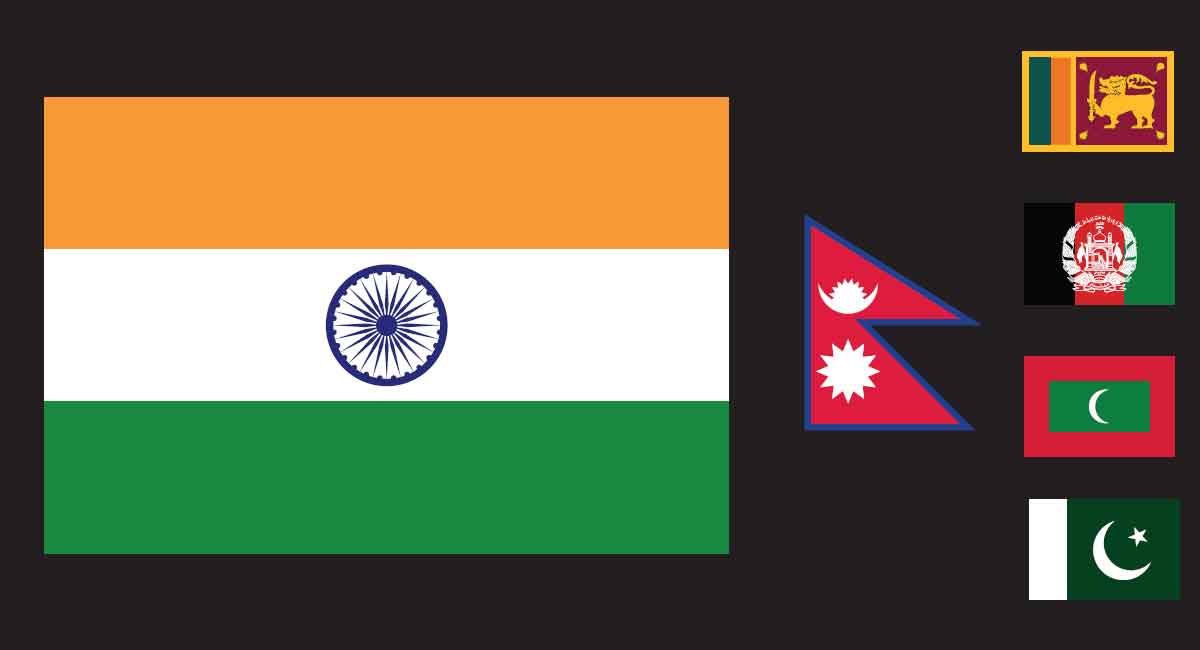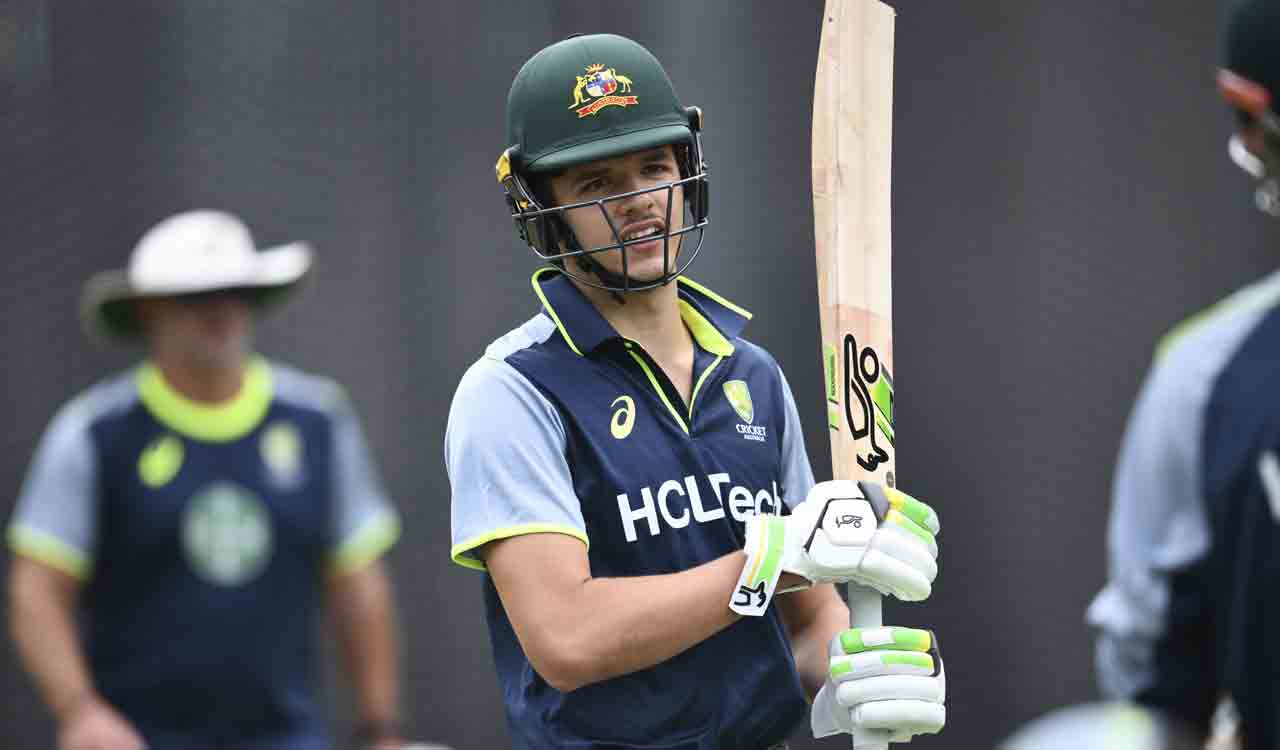Opinion: Shifting geopolitics in South Asia
By Dhananjay Tripathi The Russia-Ukraine war has stirred international politics, and we are slowly but surely entering into a new world order that will be multipolar where India’s role is critical. The recent visit of foreign dignitaries to New Delhi, including foreign ministers of China, Russia, and the UK, underlines the significance accorded to India […]

By Dhananjay Tripathi
The Russia-Ukraine war has stirred international politics, and we are slowly but surely entering into a new world order that will be multipolar where India’s role is critical. The recent visit of foreign dignitaries to New Delhi, including foreign ministers of China, Russia, and the UK, underlines the significance accorded to India by these powers. Each of these visits was discussed with deep interest, but somewhere we missed the point that a similar geopolitical shift is underway in South Asia, which also deserves our attention.
India Matters
Recently, in several South Asian countries, there has been a substantial turn in politics, and it will have both long and short term impacts on the whole of the region. Since India is a major power in the region, its response matters and New Delhi is keenly engaged in South Asia, unlike in the past. Let us take a closer look by evaluating a few of these regional diplomatic initiatives of India.
We can begin with the official visit of the Indian foreign minister to the Maldives (March 26-27) and Sri Lanka (March 28-30). The Maldives and Sri Lanka are important countries of the Indian Ocean region, maritime neighbours of India and occupy a significant place in India’s SAGAR strategy. The Security and Growth for All in the Region (SAGAR) is India’s maritime doctrine for promoting cooperation in the Indian Ocean region. Both these countries have an interesting relationship with India. During the Sri Lankan civil war, India had sent its military for establishing peace. The Indian Peace Keeping Force (IPKF) stayed in Sri Lanka from 1987 to 1990. Likewise, in 1988, Indian armed forces quelled an attempted coup against the then Maldivian government. In Sri Lanka, the IPKF had to struggle, but in the Maldives, the operation of the Indian Army codenamed ‘operation Cactus’ was a success.
Despite a history of strategic cooperation, in the last few decades, we have noticed upheavals in the political ties of India with its two maritime neighbours. The anti-India politics in some South Asian countries, hostility with Pakistan and uncertainty in Afghanistan make this region a challenge for the Indian foreign policy. Additionally, the active intervention of China in the region put India in a precarious situation. These are reasons why several Indian experts hold a pessimistic viewpoint of South Asia.
These conundrums are real, so is the fact that India is a South Asian power, and it cannot afford to ignore the region. Comparatively, India is the largest country and economy and the most superior military power in South Asia. India shares borders (land or maritime) with almost every South Asian country and has a global aspiration. Thus, India’s size, strength, and aspirations cause wariness for small South Asian countries. Over the years, some of them opted to play the China card against India. It is like balancing between the two giant Asian powers, aiming to take advantage of both. For example, Nepal’s dominant foreign policy discourse is — Nepal being a bridge between India and China. Such anxiety and response of small states concerning a big power are quite discernible in any part of the world. What is required is a better, continuous and sensitive Indian response and a proper regional perspective. The ‘Neighbourhood First’ policy provides a framework for India’s engagement in South Asia, albeit we appeared to be hesitant in the past.
Re-engaging with the Region
Today not only the world but South Asia is standing at a crossroads. In South Asia, the severe financial crisis in Sri Lanka, the humanitarian crisis in Afghanistan, and political and economic uncertainty in Pakistan are now common talking points. A careful diagnosis of each of these crises shows that it opens a window for India to re-engage with the region diplomatically.
SRI LANKA
High inflation has made life miserable for ordinary citizens in Sri Lanka. The Rajapaksa government is criticised for its mismanagement of the economy and for not taking necessary measures earlier to avert the financial breakdown of the country. Notably, Sri Lanka was left with some $2 billion of foreign reserves in February 2022, but the government delayed seeking support from international institutions like the IMF. The Rajapaksa government was known for its proximity to China. Nevertheless, when the Rajapaksa government approached India, New Delhi responded emphatically and agreed to provide diesel worth $500 million through a soft loan and also signed a $1 billion credit line so that Sri Lanka could import essential commodities.
AFGHANISTAN
India, despite having serious concerns due to the return of the Taliban, finally decided to reach out to assist Afghans. India committed 50,000 tonnes of quality wheat and three tonnes of essential life-saving medicines to Afghanistan. A part of the Indian wheat and medicines have already reached Afghanistan, and Taliban leaders have publicly expressed their gratitude to India for the timely help. It is a remarkable shift in the Indian position after some initial policy paralysis about engaging with Afghanistan controlled by the Taliban.
THE MALDIVES
Similarly, India has shaped its relationship with the Maldives in the last few years. Notably, after starting his second tenure, Prime Minister Narendra Modi selected the Maldives as the first destination for his international visit. Maldivian President Ibrahim Solih has also carefully invested in India despite facing political attacks for his policies. New Delhi returned this gesture, and, at present, the India-Maldives ties are at their best with cooperation in several sectors, including the military. For example, in 2019, the National Center for Good Governance signed a memorandum with the Maldives Civil Services Commission for capacity building of 1,000 Maldives Civil Servants over the next five years. In his just-concluded visit, Foreign Minister S Jaishankar highlighted the salient features of Indian development assistance to the Maldives, terming it a “transparent partnership driven by Maldivian needs and priorities — today ranges upwards of $2.6 billion”.
PAKISTAN
Lastly, amid political uncertainty in Pakistan, Chief of the Pakistani Army, General Bajwa, has made some interesting comments. Last year, General Bajwa’s remarks on South Asian regionalism also intrigued many. He emphasised the relevance of geo-economics over geo-strategy and underlined the criticality of stable Indo-Pak relations for the region. As a matter of fact, since then, General Bajwa has not deviated from his position on India. Recently, he acknowledged that there are no violations of the LoC ceasefire. The Pakistani army has also maturely handled the misfiring of the Brahmos Missile from India, which landed in Pakistan.
NEPAL
Let us not forget to add the visit of Nepal’s PM to India, which also marked the inauguration of a 35-km long cross-border rail link from Jayanagar in Bihar to Kurtha, Nepal. There were visible strains in the India-Nepal ties, mainly on the border issues, but this visit of Sher Bahadur Deuba is a new ray of hope, considering it generated some goodwill on both sides.
To conclude, none means China is at a backfoot or there is some very favourable political shift for India in the region. South Asia is changing, and this is where India has to re-engage with new vigour and vision. South Asian countries are looking towards India due to unexpected changes in the world order, like the pandemic and the Russia-Ukraine war. Nonetheless, it is a historic opportunity for New Delhi to act positively to meet its neighbours’ expectations and strengthen its position in the region.

(The author is Senior Assistant Professor, Department of International Relations, South Asian University, New Delhi)
Now you can get handpicked stories from Telangana Today on Telegram everyday. Click the link to subscribe.
Click to follow Telangana Today Facebook page and Twitter .
- Tags
- Afghanistan
- India
- Maldives
- Nepal
Related News
-
Telangana HC suspends orders against KCR and Harish Rao
23 mins ago -
Kohli and Smith will be dangerous and hungry: Shastri
32 mins ago -
Sharvari shares her TBR list of romantic book titles, suggested by fans
1 hour ago -
Khammam Congress gaffe: Union Home Minister Amit Shah made ‘Defense Minister’
1 hour ago -
Couple held for theft in Hyderabad
1 hour ago -
KCR extends Christmas wishes to people of Telangana
2 hours ago -
Mrunal Thakur wraps up schedule for Adivi Sesh’s ‘Dacoit’
2 hours ago -
Santosh Trophy: Kerala, TN share spoils
2 hours ago




